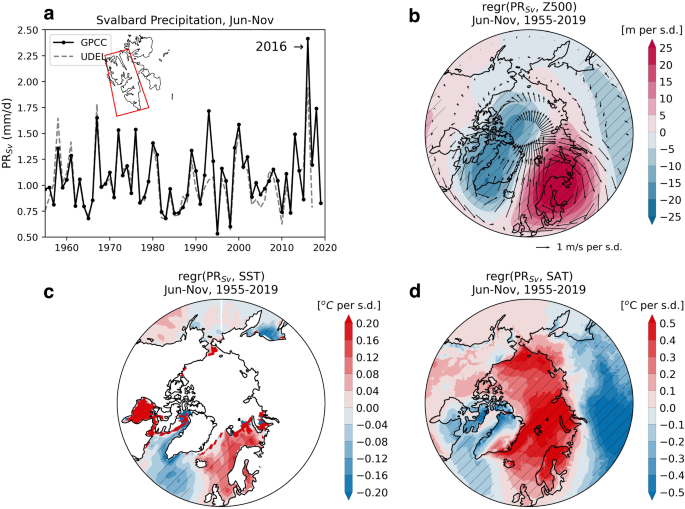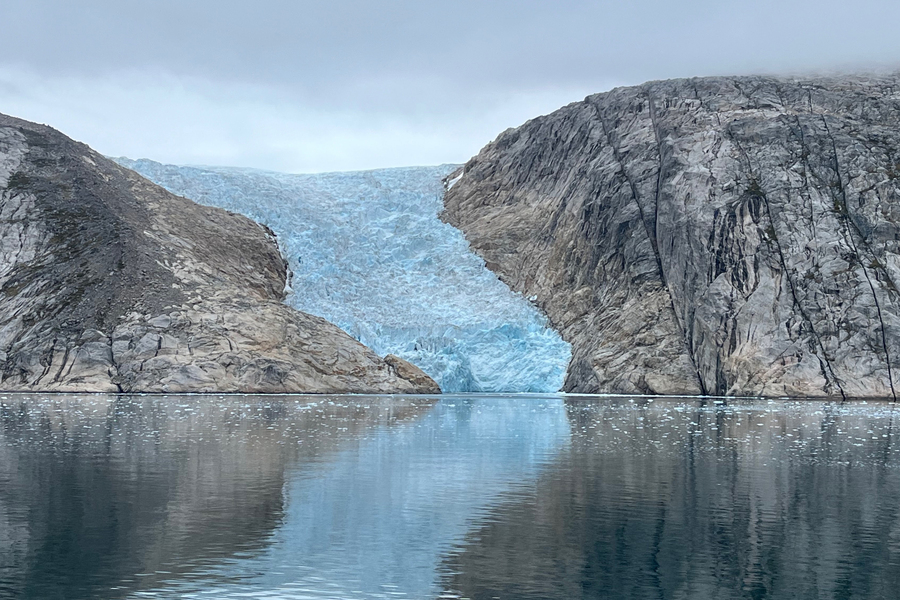2024-06-03 マサチューセッツ大学アマースト校
<関連情報>
- https://www.umass.edu/news/article/arctic-melting-heavily-influenced-little-studied-meteorological-phenomena-find
- https://www.nature.com/articles/s41467-024-48603-8
過去2千年間のスヴァールバル諸島の極端な気候は大気のブロックと関連している Climate extremes in Svalbard over the last two millennia are linked to atmospheric blocking
Francois Lapointe,Ambarish V. Karmalkar,Raymond S. Bradley,Michael J. Retelle & Feng Wang
Nature Communications Published:03 June 2024
DOI:https://doi.org/10.1038/s41467-024-48603-8

Abstract
Arctic precipitation in the form of rain is forecast to become more prevalent in a warmer world but with seasonal and interannual changes modulated by natural modes of variability. Experiencing rapid hydroclimatic changes in the Arctic, Svalbard serves as an ideal study location due to its exposure to oceanic and atmospheric variability in the North Atlantic region. Here we use climate data from paleoproxies, observations, and a climate model to demonstrate that wet and warm extremes in Svalbard over the last two millennia are linked to the presence of atmospheric blocking regimes over Scandinavia and the Ural mountain region. Rainfall episodes lead to the deposition of coarse sediment particles and high levels of calcium in Linnévatnet, a lake in southwest Svalbard, with the coarsest sediments consistently deposited during atmospheric blocking events. A unique annually resolved sediment record from Linnévatnet confirms that this linkage has been persistent over the past 2000 years. Our record also shows that a millennial-scale decline in Svalbard precipitation ended around the middle of the 19th century, followed by several unprecedented extreme events in recent years. As warming continues and sea ice recedes, future Svalbard floods will become more intense during episodes of Scandinavian and Ural blocking.



